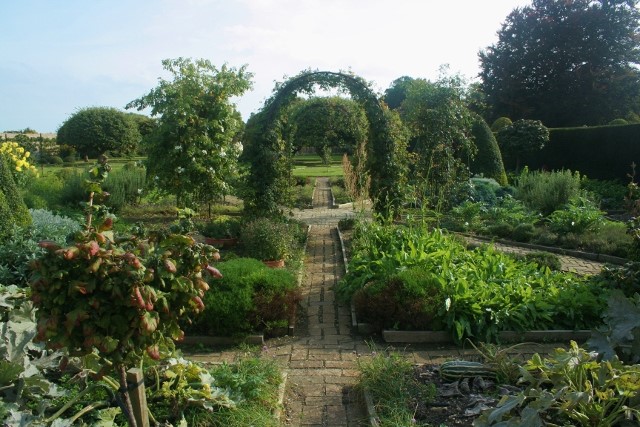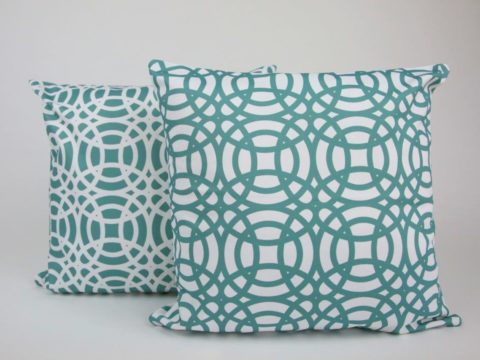Grimsthorpe Castle
Chapter 2 : Visiting
If you have never heard of Grimsthorpe Castle, you certainly aren't the only one. We were unaware of it until fairly recently, when we looked into one of its Tudor owners, Katherine Willoughby, 12th Baroness Willoughby d’Eresby and Duchess of Suffolk.
The castle, the earliest part of which dates from the reign of King John, is nestled deep in the Lincolnshire countryside.
As soon as you turn into the long driveway, you are struck by the fantastic vista, up the parkland (which is as neat as astro-turf) to the great winged Vanburgh North façade. The parking area is to the east of the driveway, and you pay as you enter. There is a concession for English Heritage members, and entry is free for members of the Historic Houses Association. You are instructed to show your receipt in the shop in return for a timed ticket to enter the house, other than on Sundays, when entry is free-flowing.
The shop is in the stable-yard, along with a café, and lavatories.
Exiting the yard, the walk to the house is up a very gentle gradient, and you arrive at the north-east corner. The North façade is a U shape. In the centre is a fountain, and on either side are two wings, the west one housing the double height chapel, and the east one with the state dining room on the upper floor.

Entrance is through the south-east corner into a stone hall where the timed ticket is collected and bags may be left. The guide then leads the group thought the main front door in the middle of the north wing. This door opens into the huge Vanburgh hall, with a fireplace on the south wall, and a triple set of arches on the east and west. Above the fireplace, mirroring the windows in the external face are niches, with painted figures of kings who were benefactors of the family. They include Henry III and Henry VIII as well as various Williams and Georges.
There is a sofa and chairs set out on a beautiful Persian rug, and a series of Vanburgh designed hall chairs for the servants, with the coats of arms of the family, flanked by the two supporters of the monk and the wild man that hold the shield in various places above doors and gateways. The arms show Bertie, Willoughby, Wynne of Gwydir, Brownlow of Belton and others.
The tour climbs the shallow stair in the east side, which turns at 90 degrees to lead you into the great dining room, which is still used. HRH The Prince of Wales and HRH The Duchess of Cornwall dined and slept in the castle when Prince Charles gave RAF wings to Prince William, Duke of Cambridge, after the latter completed his military flying training at nearby RAF Cranwell in 2008.The dining table is covered in red crush, with red velvet 18th century chairs, English crystal, and a Sèvres dinner service.

The Dining Room is the middle floor room on the far right. King John’s Tower is the end block.
On the west wall the windows (which would give onto the U-shaped courtyard) are covered by 17th century tapestry and a half completed portrait of Sarah Drummond by the great eighteenth-century portraitist, Sir Thomas Lawrence. He has complete her head and bust but the rest of her is still in grey.
There is a grand velvet screen heavily embroidered with a coat of arms, and strangely, various thrones, both here and elsewhere. Apparently, second hand thrones and other royal and parliamentary accoutrements are perks of the job of Lord Great Chamberlain, one of the hereditary family positions. The current Lady Willoughby, the 28th Baroness, who is 80, is represented in the role by a relative.
The tour leaves this room by the same door as it entered, then goes across the stair landing and into the older, 16th century part of the house. The decoration here is largely 18th century, with a ceiling from the renovations of the 1920s. The chandelier is one of a pair that came from No. 4 St James Square, London, the home of Nancy, Lady Astor, Lady Willoughby’s maternal grandmother. The walls are lined with the usual portraits of royalty and former barons, earls and dukes of the family - the earldom of Lindsay and the duchy of Ancaster.
In particular, Ramsay’s famous portraits of George III and Queen Charlotte in their coronation robes flank the fireplace. Whilst there are many copies of the portrait from Ramsay's studio these two are actually endorsed by him. Between them is a portrait of Charles I and Henrietta Maria, in the style of Van Dyck. The very knowledgeable guide pointed out some of the tell-tale signs of a less talented artist, than the master himself.
Although this room is in the older part of the house, it still seemed eighteenth century in style. The next room, too was largely in seventeenth or eighteenth century style. It was lined on the inner, west wall with tapestries rescued from the fire at Normanton Hall (another family property) in the 1920s, set off by the ‘cigar’ coloured paint, with gold fish tailing around the window sashes. These larger windows have been built into the Tudor walls to give more light. The south end of the room butts onto the tower of King John’s original castle, dating from the late 1100s.
There are large Italian marble topped tables and mirrors, collected on the grand tour by one of the Dukes. Apparently, this is the room used by Henry VIII to hold a privy council meeting here in August 1541, as he and his fifth queen, Katheryn Howard, travelled north to York, via Lincoln, calling in en route.
This ends the eastern corridor. You turn right along the original Tudor long gallery. This is lined from top to bottom with portraits of Tudor, Stuart and Georgian courtiers and politicians. Katherine Willoughby is there, flanked by her husbands, Charles Brandon, Duke of Suffolk, and Richard Bertie. Also in this corridor is the table that Queen Victoria used to sign her coronation oath.
There are various bedrooms along the south wall, into which the visitor can peep. They are all in use, when the family entertains. It is fun to think of people still sleeping on the enormous tester beds, under canopies that once graced the thrones of kings. The corridor culminates in an alcove with the grandest throne of all, that of George IV. It is large, solid, self-important and heavily gilded, much like the man himself.

Turning up the west corridor, we had a glimpse into the central courtyard, used by Lady Willoughby as her private garden. On this corridor is the lovely bedroom occupied by the Duchess of Cornwall on her visit. Over the bed is the enormous canopy that once covered the George IV throne.
Because of the antiquity of many of the pictures and tapestries, it is necessary to keep most of the windows shuttered or the curtains drawn, which gives a generally sleepy and forgotten air to the house. Presumably when the family is in residence it is all opened up.
In the west corridor are portraits of her Lady Willoughby’s two grandmothers, both American - Nancy Astor MP and the great heiress, Eloise Lawrence Breese, who restored Grimsthorpe in the 1920s - as well as her father and a picture of her as a child.
At the end of the corridor, the tour re-enters the Vanburgh section, but this time the north-east wing. A left turn takes you to the Chinese drawing room, this is a beautiful room with floor-length bay window giving directly to the west and overlooking the superb parkland, and the location of the former Vaudy abbey, the stone of which was used for the house. The walls are lined with Chinese silk wallpaper, dating from 1811. The ceiling is a marvel of 124 individual plastered and gilded squares, each one different from its fellows. Below the dado line, the walls are black, with the goldfish tailing design seen earlier.
Opposite the Chinese room is the chapel, used for Evensong on Sundays, when it is open to the public.There are memorials to Lady Willoughby’s mother, Nancy Astor the younger, and her brother, who died young, before inheriting the title. There is also a handsome crewel worked carpet showing at least twenty of the quarterings of the arms of the family, including the ones mentioned previously on the chairs, plus Vere, Ufford, Wharton, Maleverer, Clare and others.
The tour then goes down the staircase on the west side of the Vanburgh entrance hall that mirrors the one in the east to exit where it began.
Outside
The grounds are superb. There are a couple of herbaceous border on the west side, which drop away to a fantastic view of parklands in the style of Capability Brown. The borders are hedged with yew, clipped into curved shapes to look like a wall with pillars and balls.
These borders lead towards the south façade, which has a long lawn, then an interesting series of clipped topiary hedges before opening into woodlands.
On the east side are a rose garden – rather old fashioned in style – stiff hybrid teas in blocks of colour, and then a truly lovely walled garden, filled with cutting flowers as well as beds of vegetables and ornamentals and an orchard.





